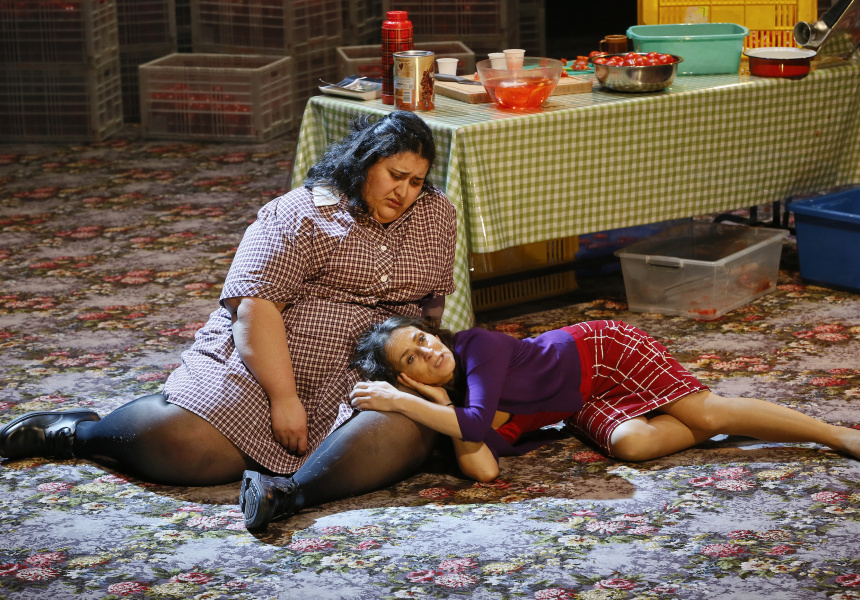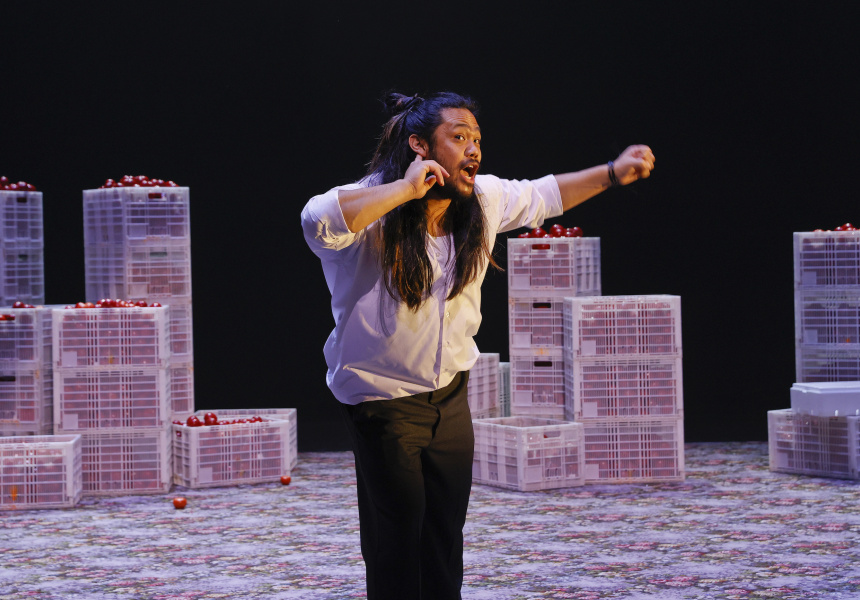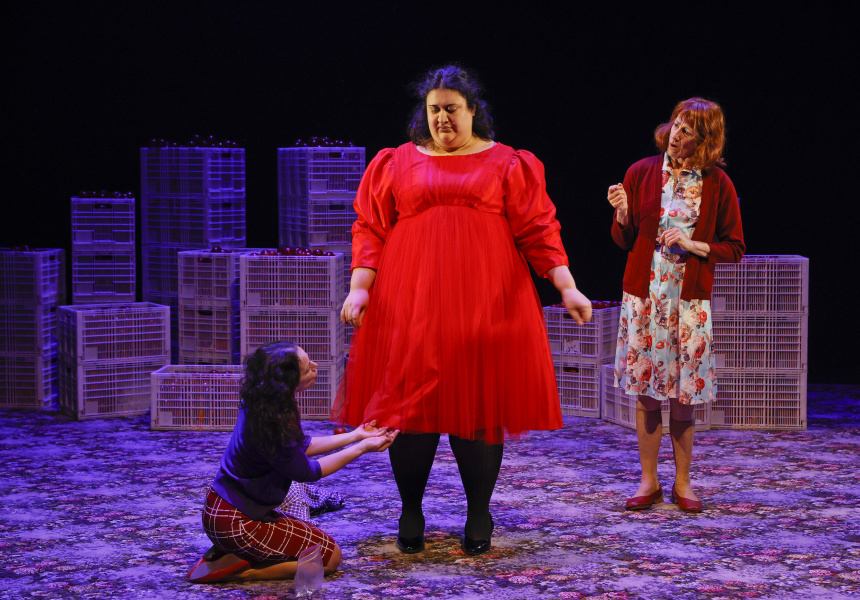As kids, it can feel like we live in a silo – in the best way. Oblivious to the world around us, our families can feel like our whole lives, our rituals like something only we do.
One of those, for me – as an Italian-Australian – was passata day, a sacred summer tradition where everyone converged on Nonna and Nonno’s to make the year’s sauce.
So, as a seven-year-old, seeing that very event bookend iconic turn-of-the-century Australian film Looking for Alibrandi – based on Melina Marchetta’s bestselling debut 1992 novel of the same name – was like watching my life play out on screen.
We think you might like Access. For $12 a month, join our membership program to stay in the know.
SIGN UPWhen I explain that (far less eloquently) to theatre director Stephen Nicolazzo, who also has Italian roots, he says his experience with the film was “exactly the same”.
“I felt like I had been seen,” he tells Broadsheet. “It really resonated in terms of the experience of feeling othered [and] being too this or too that.”
But ultimately, “It allowed me to see that it wasn’t a bad thing to be a wog.”
The warts-and-all portrait of Italian family culture – and the migrant experience – in ’90s Australia warms your heart in one moment and delivers a gut-punch the next. And after a debut mainstage season in Melbourne, it’s coming to to Sydney, where the book was set and the film was shot in quintessentially Sydney locations including Bondi Beach, Central Station and Oporto. Its opening night at Belvoir marks 30 years to the day since the book was published.
Not only is Nicolazzo directing – he was also the driving force behind its adaptation.
On a flight home from New York, where he’d just attended a Directors Lab (a development program for stage directors worldwide) his mind was racing. “What stories did I need to tell, and what stories did Australian audiences need to hear?”
One immediately sprang to mind: Looking for Alibrandi. So he cold-contacted its author, Marchetta, via the Contact page on her website – “like a wild person,” Nicolazzo explains. “She said, ‘Don’t contact me here; here’s my email’.”
Just before the life-altering events of 2020, the pair met at a cafe in Sydney – right around the corner from where “the old nonna house” in the movie is. “It was a surreal experience,” says Nicolazzo, who pled his case over coffee. “She said, ‘Lots of people have wanted to adapt it for the stage and I’ve never said yes. I want you to know that this book is my family and it’s really hard for me to make that decision’.”
Something Nicolazzo said worked. Maybe it was their shared heritage or his love of literature. Or the fact he’d recently directed two well-received adaptations of novels by Greek-Australian author Christos Tsiolkas, Loaded and Merciless Gods.
Nicolazzo forged ahead. And so began a three-year process through the guts of lockdowns, in which he worked with writer Vidya Rajan – a former Malthouse writer-in-residence – on shaping drafts, tearing them apart and then completely reimagining them with help from the cast, many of whom have been on board since its infancy.
Josie Alibrandi, a third-generation Italian, is the axis on which the film rotates. The whip-smart scholarship kid is in her final year of high school, grappling with all that brings with it (aspirations, relationships) and a family curse she can’t quite escape.
But, in Rajan’s stage version, Josie shares the spotlight more wholly with her righteous mother Christina and high-and-mighty (but secret-bearing) nonna, Katia. Unlike in the film, it’s not just Josie who comes of age, but all three of them.
“There’s a real sense of what each of these women has lost, and that’s part of the action,” says Nicolazzo. “You get to see Christina and Nonna Katia as whole people; they all have the curse, and we need to understand why.”
Nicolazzo and Rajan, who’s Indian Tamil, saw glimmers of their own families in the Alibrandis. But they inserted parts, too. “Some of the lines are directly lifted from what [our families] say,” Nicolazzo says. “My Nonna calls Nescafe Blend 43 ‘Nescoffee’, so they call it that [in the play]. Then there’s the table-smacking. It’s really idiosyncratic.”
But this isn’t just an Italian story – or even a ’90s one. Sure, the adaptation has remained a period piece, but looking at it through today’s lens, it’s clear the underlying socio-political commentary on issues like racism and classism isn’t bound by any one era.
For Rajan, when reworking the source material, the question was: “How radical should we be with it?”
“It wouldn’t really work if you changed the time period,” she says. “But there are newer waves of migrants that have had quite different experiences … That intergenerational aspect – and how you pass on trauma – is a thing for a lot of migrant kids.
“We’re starting to understand more of these historical links to things. And it’s not just a race thing, it’s also a class thing.”
Weaving those greater perspectives throughout, Rajan’s adaptation speaks to the story’s universality, while simultaneously celebrating the culture at its core.
That includes the passata-making, which happens live. A giant floral carpet covers the stage, bordered by dozens of crates of tomatoes, with an “outdoor” sauce station to the right. A truly sensory experience, you’ll smell it as soon as you walk into the theatre.
“It’s cooking throughout the show, so you see all the stages – that’s the through line,” says Nicolazzo. “It’s a beautiful symbol of the way the family operates. It’s precarious: when you put a bottle in a drum it can explode – just like a family!”
Looking for Alibrandi runs from October 1 to November 6 at Sydney’s Belvoir St Theatre.



